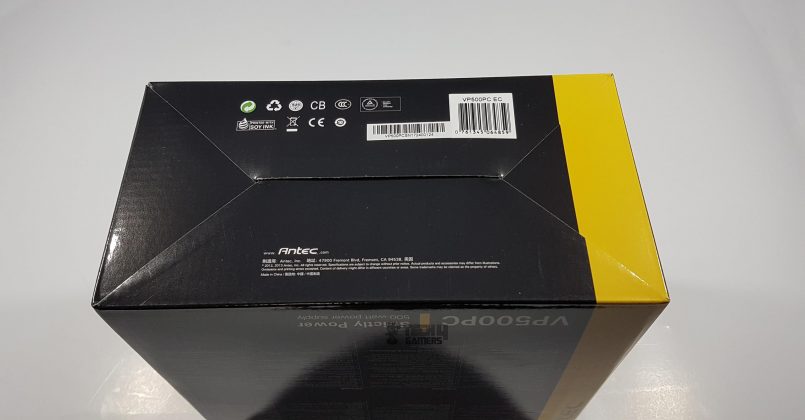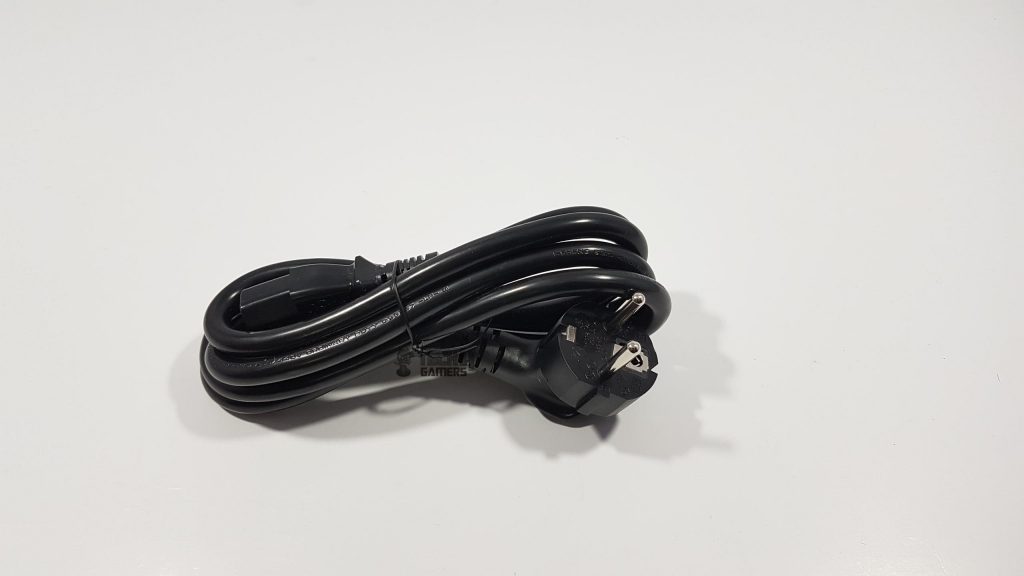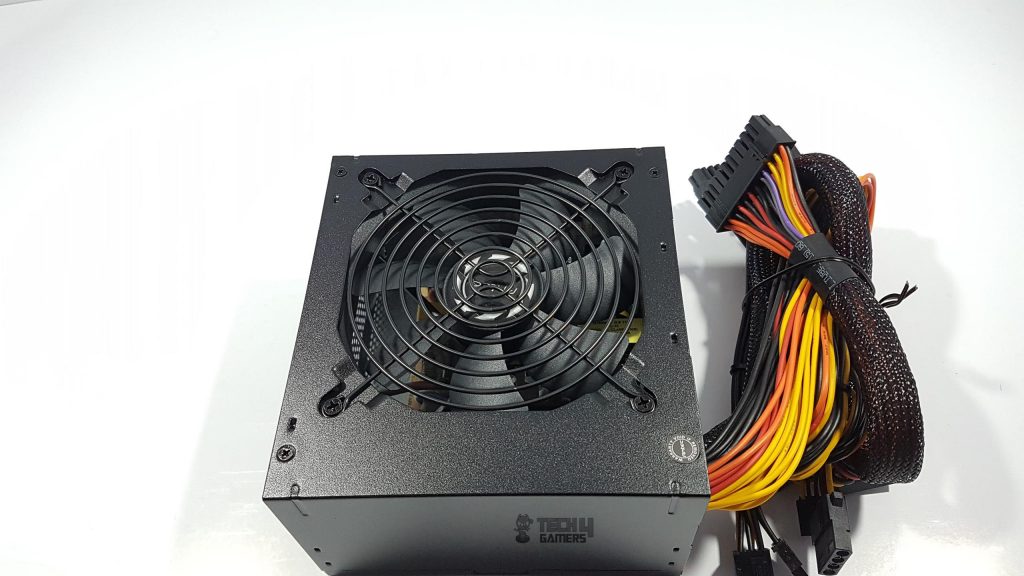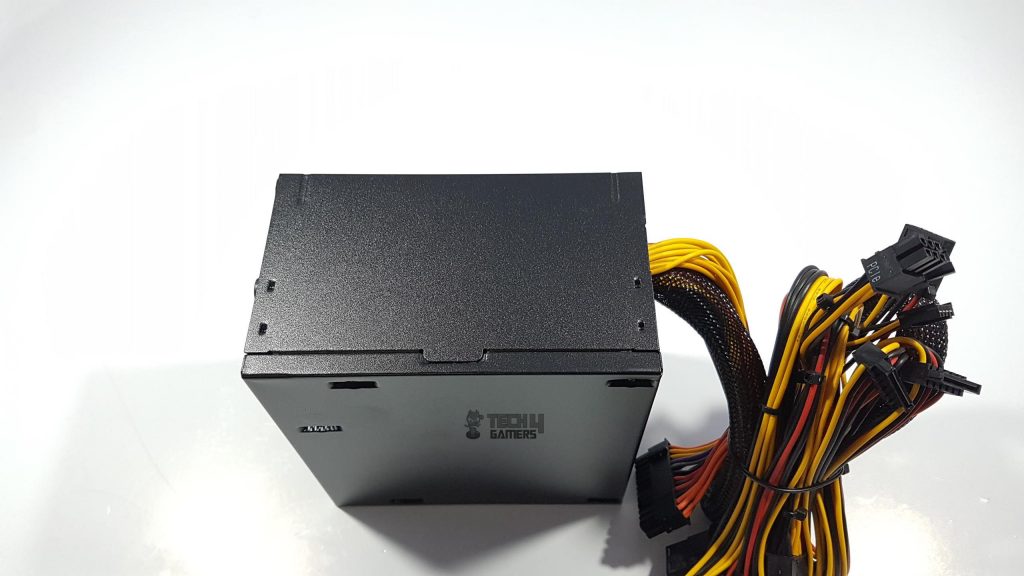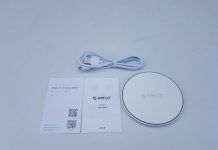Affordable!
Review Summary
The Antec VP500PC, a budget-friendly 500W power supply, balances performance and affordability. With ERP Lot 6 certification for energy efficiency, it caters to users seeking reliability without breaking the bank. The non-modular design may pose cable management challenges, but the 120mm fan ensures efficient and quiet cooling. Basic protection features enhance safety, yet users with power-hungry builds or those desiring premium components may find it lacking. Despite some limitations, the VP500PC aligns with Antec’s commitment to quality performance and offers a 2-year warranty.
Hours Tested: 9

Overall
-
Performance - 8/10
8/10
-
Value - 9/10
9/10
-
Efficiency - 9/10
9/10
-
Noise Level - 8/10
8/10
Pros
- Budget-Friendly
- Energy-Efficient
- Quiet Cooling
- Basic Protection
- Compact Size
- 2-Year Warranty
Cons
- Non-Modular
- Limited Wattage
- Non-Premium Components
- Cable Management Challenges
Let’s dive into the Antec VP500PC, an entry-level budget PSU from Antec. It has got the ERP Lot 6 certification for energy efficiency, making it a reliable performer. Thanks to its APFC technology, this PSU not only boosts reliability and performance but also helps cut down on power consumption, meeting the ERP Lot 6 and CE standards. Checking out the Antec VP500PC, you’ll find it’s rocking dual +12V rails for steady power and a 120mm fan that keeps things cool without causing a ruckus.
Let’s take a look at the major specifications of the Antec VP500PC:
| Product | Antec VP500PC PSU |
|---|---|
| Continuous Power | 500W |
| Fan Size | 120mm |
| MTBF | ≥ 100,000 hours |
| Efficiency | Up to 82% |
| Compliant Energy Standard | ErP Lot 6 |
| Weight | 1.75kg |
| Size | 86mmx150mmx140mm |
| Warranty | 2 Years |
Key Takeaways
- Antec VP500PC is an entry-level budget power supply with ERP Lot 6 certification for energy efficiency, featuring a quiet 120mm fan and dual +12V rails for stability.
- It is ideal for budget-conscious users seeking a reliable and efficient power supply without unnecessary frills or complex features.
- It may not be the optimal choice for users with power-hungry builds seeking top-tier components like Japanese Capacitors, as the VP500PC opts for CapXon-manufactured capacitors to maintain cost-effectiveness.
- Why you can trust Tech4Gamers: Our reviews are based on dedicated hands-on testing by our team of experienced hardware experts. Find out more about how we test.
Packaging And Unboxing
Let’s unpack the Antec VP500PC:
Accessories
We have a user guide, 4 screws and the standard power cord.
Closer Look
Let’s take a detailed look at all the components of the Antec VP500:
Encased in an air pocket container for added shipping safety, this non-modular PSU has pre-installed cables following the standard non-modular PSU design. Aligned with the Intel Form Factor of ATX 12V V 2.3, it measures 150 x 140 x 86mm. Operating at an input AC of 230VAC with a frequency range of 47 – 63 Hz, it boasts 82% efficiency at typical load, a ≥100,000 Hours MTBF, and basic protection features (OVP / OPP / OTP / SCP). The top side houses a standard 120mm fan, thermally controlled for optimized heat and noise management, featuring an Antec-branded sticker on the motor hub and a warranty void label on one of the screws.
On one side of the PSU, there’s a simple, label-free surface. Meanwhile, the opposite side features essential information, including the power and serial number details. The VP500PC, functioning as a switching power supply with Active Power PFC, operates on a 220V AC input with 4A and a frequency range of 47-63Hz. Notably, it boasts dual +12V rails, distributing 24A on rail 1 and 21A on rail 2, resulting in a combined output of 408W on the +12V rails.
The rear side has a mesh covering the entire side for effective heat dissipation. There are a 3-pin power connector and power on/off button. Coming to the bottom side, it has a solid cover without any vent. 5 screws are coming out of it indicating that the PCB is screwed on the base.
The unit has 24-pin ATX power cable sleeved in black color. All other cables are not sleeved or braided. Connectors’ info is as under: –
| Connector | Quantity | Length of the Cable (Approx) |
| MB 20+4 Pin | 1x | 500mm |
| CPU 12V 4+4 Pin | 1x | 540mm |
| PCIe 6+2 Pin | 2x [On a single cable] | 600mm |
| SATA | 4x [2x on one cable] | 930mm |
| Peripheral 4 Pin | 3x [2x on one cable, 1x on the second cable] | 940mm |
| FDD Cable 4 Pin | 1x [On the Molex connectors’ cable] | – |
PCB And Circuit Design
Let’s delve into the PCB and circuit design. A computer relies on various intricate circuits, demanding a consistent supply of stable voltages like +5V, -5V, +12V, -12V, 3.3V, etc. Beyond voltage and current considerations, factors like harmonic balance, cross load regulation, noise resilience, and safety features (OVP and OCP) are crucial. Antec’s V500PC 500W, an affordable power supply, ensures optimized power for a PC. It features an active power factor correction circuit, a power supervisor IC, EMI suppression, and complies with IEC standards. The APFC circuit prevents noise interference on the AC supply grid.
For component inspection, I separated the fan and uncovered the supply from its shock resistant transparent case. An X rated yellow capacitor is soldered across the live and neutral AC wires for Electromagnetic Interference (EMI) filtration. Shortening of it will cause to blow the fuse located near it. Similarly, two Y rated capacitors are connected across the earth and live/neutral wires for the same purpose. Moving onwards is the circuit for transient EMI/EMC filtration. It contains 2x common mode inductors, 1x Metal Oxide Varistor (MOV), 1x yellow colored X rated capacitor and 2x blue colored Y rated capacitors.
After the EMI filtration circuit, I turn my attention to the Active Power Factor Correction (APFC) circuit, driven by the PWM/PFC combo controller IC CM6805. This circuit features IPA60R125CP MOSFETS, an enclosed ferrite coil, and the CM6805 IC. After this, a large capacitor with a rating of 270uF is connected for DC filtration. The CapXon capacitor, rated at 400V and operable up to 85 ˚C, is placed to the left, behind the large heat sink holding PFC MOSFETs on its other side.
Then comes the turn for the introduction of all subs systems that play their respective role in tandem with each other. I have made a full layout of the power supply from the input stage to the output rectification & filtration stage.
Moving to the secondary side of the main ferrite core transformer, it rectifies and filters to ensure smooth DC outputs. Maintaining stable voltage levels for various outputs (e.g., 3.3V, 5V, 12V, -12V) in response to load variations is crucial for power supply performance.
Now, let’s delve into the role of feedback control, which is ensured by feeding the scaled output voltage back to the PWM IC controller. As mentioned earlier, multiple voltage levels are distributed through tagged colored cables from the PCB to power their respective loads. Lastly, the backside of the PCB is well-protected with solder mask, adapting trace width to accommodate currents of different magnitudes. Soldering has been meticulously executed, resulting in uniformly shining joints throughout.
Testing
We have used Thermaltake Dr. Power II to test the sample unit. Thermaltake Dr. Power II has the functionality to test the ATX 20+4 pin, CPU 4+4 pin, PCIe 6 or 8 pins, SATA, and peripheral connectors and report the corresponding voltages by putting a load on the PSU. It also has the ability to report the issues with the PSU.
The reported voltages need to be compared with the Intel Standard and the Measuring Range of the testing equipment.
The below-mentioned table has the Intel Standard, Measuring Range, and the Reported Voltages:

All the tested voltages fall within the Intel’s standard. Here are the connectors’ wise reported voltages:
| Connector | Tested Voltage (V) |
| ATX 24-Pin | +12.2 |
| CPU 4+4 Pin +12V | +12.3 |
| PCIe 6/8 Pin +12V | +12.1 |
| Peripheral | +5.1, +12.3 |
| SATA | +5.1, +3.3, +12.3 |
Should You Buy It?
You might be still confused about buying the Antec VP500 PSU. Therefore, to help you make a more informed decision, I have narrowed down the right audience:
Buy It If:
✅ You Are On A budget: The Antec VP500PC is an excellent choice if you are looking for a budget-friendly power supply that offers reliable performance without breaking the bank.
✅ You Have Standard Power Needs: If you have a moderate power requirement for your system and don’t need advanced features or premium components, the VP500PC’s 500W capacity, dual +12V rails, and basic protection features make it a suitable and economical option.
✅ Energy efficiency matters: With ERP Lot 6 certification, the VP500PC is designed to be energy-efficient, making it a good pick for users who want to save on power consumption and reduce utility bills.
Don’t Buy It If:
❌ You Have Power-hungry Build: If you have a high-performance system with demanding power needs, the VP500PC’s 500W capacity might not be sufficient. Consider higher wattage options for power-hungry builds.
❌ You Prefer Premium Components: If you specifically prioritize premium components like Japanese Capacitors in your power supply, the VP500PC might not meet this criterion as it utilizes CapXon-manufactured capacitors for cost-effectiveness.
❌ You Need A Modular Design PSU: The VP500PC is a non-modular power supply, meaning that all cables are pre-installed. If you prefer a modular design for easier cable management and customization, you might want to explore other options.
Final Verdict
The Antec VP500PC, an entry-level budget power supply, holds the ERP Lot 6 certification for green efficiency, leading to power savings and reduced utility bills. With dimensions of 150x140x86mm, it’s promoted by Antec as a no-frills, quality performance solution. Key features include a quiet 120mm fan, dual +12V rails for stability, and robust protection circuitry. The non-modular PSU aligns with the Intel Form Factor of ATX 12V V 2.3, operates at 230Vac, and maintains 82% efficiency at typical load. Protection features include OVP / OPP / OTP / SCP, and the unit boasts an MTBF of ≥ 100,000 Hours.
While lacking Japanese Capacitors, the CapXon-manufactured capacitors with a 400V rating and 85°C temperature resistance cater to its affordable pricing. The unit comes with Antec’s Quality 2-year warranty, embodying a no-nonsense approach with a focus on essential power features.
Recent Updates
- February 3, 2024: A few text changes to improve readability. Also added image galleries.
Thank you! Please share your positive feedback. 🔋
How could we improve this post? Please Help us. 😔
[Hardware Reviewer & Editor]
Meet Nauman Siddique, a highly experienced computer science graduate with more than 15 years of knowledge in technology. Nauman is an expert in the field known for his deep understanding of computer hardware.
As a tech tester, insightful reviewer, and skilled hardware editor, Nauman carefully breaks down important parts like motherboards, graphics cards, processors, PC cases, CPU coolers, and more.
- 15+ years of PC Building Experience
- 10+ years of first-hand knowledge of technology
- 7+ years of doing in-depth testing of PC Hardware
- A motivated individual with a keen interest in tech testing from multiple angles.
- I majored in Computer Science with a Masters in Marketing
- Previously worked at eXputer, EnosTech, and Appuals.
- Completed Course in Computer Systems Specialization From Illinois Tech


 Threads
Threads



